Selecting the perfect cut of pork and using a slow cooker transforms tough meat into tender, flavorful BBQ pulled pork. Season, marinate, and cook slowly for 8-10 hours, then shred and baste with sauce. Experiment with barbecue sauces to customize tanginess, sweetness, and heat level. Serve on toasted buns with sides like coleslaw and baked beans. Store leftovers safely up to 3-4 days or freeze for later.
Discover the secret to achieving melt-in-your-mouth tender pork with a zesty twist using your slow cooker. This ultimate guide to BBQ pulled pork reveals the perfect cut of meat and step-by-step cooking methods for a classic, flavorful dish. Learn to craft a tangy barbecue sauce mix, marinate the pork to perfection, and shred it to create a memorable BBQ experience. From seasoning tips to serving suggestions, master the art of slow cooker BBQ pulled pork with our comprehensive recipe.
- Choosing the Right Cut of Pork for Slow Cooker BBQ
- Creating the Zesty Barbecue Sauce Mix
- Seasoning and Marinating Tips for Tender Results
- Cooking Pulled Pork in a Slow Cooker: Step-by-Step Guide
- Shredding the Pork for a Classic BBQ Experience
- Mixing in Flavor with Your Favorite BBQ Sauces
- Serving Suggestions for Delicious BBQ Pulled Pork
- Storage and Reheating Tips for Leftover Pork
Choosing the Right Cut of Pork for Slow Cooker BBQ

When it comes to crafting the perfect BBQ pulled pork recipe using a slow cooker, selecting the right cut of pork is paramount. Look for a lean but flavorful piece like the shoulder or butt. These cuts are ideal because they’re packed with rich meat and tend to remain tender even after slow cooking. The slow and steady heat of the cooker breaks down the collagen in these cuts, resulting in succulent, pull-apart pork that’s perfect for your favorite BBQ sauce.
In a BBQ pulled pork recipe, the shoulder or butt cut allows the magic of the slow cooker to transform tough muscle fibers into mouthwatering, tender meat. This process is known as braising, and it ensures that every bite is infused with flavor. With the right cut chosen, you’re well on your way to creating a delicious, slow-cooked BBQ pulled pork dish that will satisfy any appetite.
Creating the Zesty Barbecue Sauce Mix
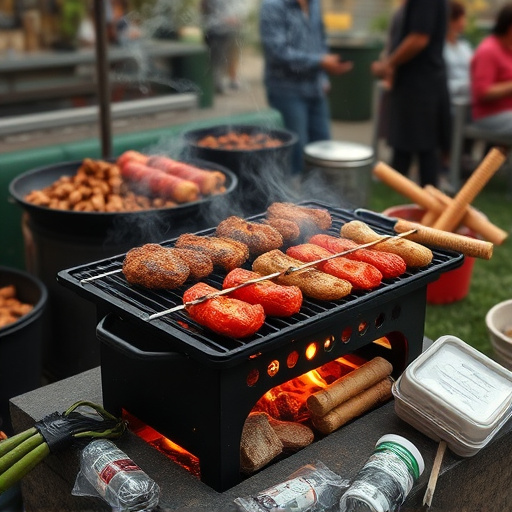
To create a zesty barbecue sauce mix for your slow cooker BBQ pulled pork recipe, start by combining all the necessary ingredients in a bowl. This typically includes a base of ketchup or tomato paste, vinegar (for tanginess), brown sugar or honey for sweetness, garlic and onion powder, paprika, chili powder, salt, and pepper. For an extra zing, add some dried oregano, cayenne pepper, or even a splash of Worcestershire sauce. Mix all these elements until you have a well-blended sauce that’s both savory and sweet.
Once your sauce is ready, pour it over the tender pork shoulder in the slow cooker. This combination will result in mouthwatering, succulent pulled pork that literally melts in your mouth. The slow cooking process allows the flavors of the sauce to deeply penetrate the meat, creating a rich, zesty taste profile perfect for any BBQ pulled pork recipe.
Seasoning and Marinating Tips for Tender Results
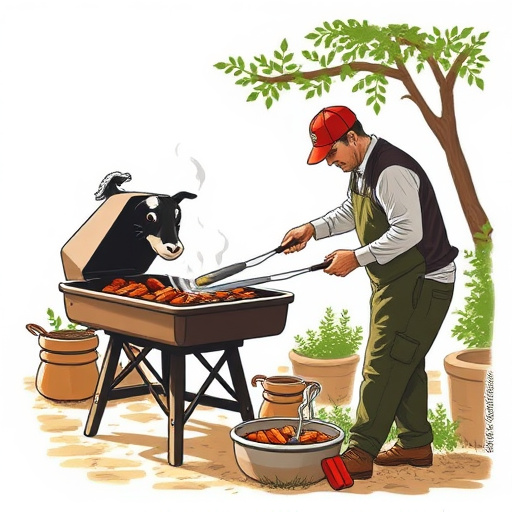
Achieving tender, mouthwatering BBQ pulled pork in a slow cooker starts with the perfect seasoning and marinating. First, rub your pork shoulder generously with a blend of salt, pepper, garlic powder, paprika, and onion powder. These dry rubs penetrate the meat, enhancing flavor as it cooks slowly. For extra tenderness, consider adding a few splashes of apple cider vinegar or a light coating of oil to your spice mix.
Next, for optimal results, marinate your pork in the refrigerator for at least 4 hours—or even overnight. The acid from the vinegar helps break down tough muscle fibers, while the moisture from the marinade ensures your meat stays juicy during the long, slow cook. Choose a flavorful BBQ sauce to baste the pork as it cooks, adding a zesty kick that will elevate your dish far beyond ordinary pulled pork.
Cooking Pulled Pork in a Slow Cooker: Step-by-Step Guide
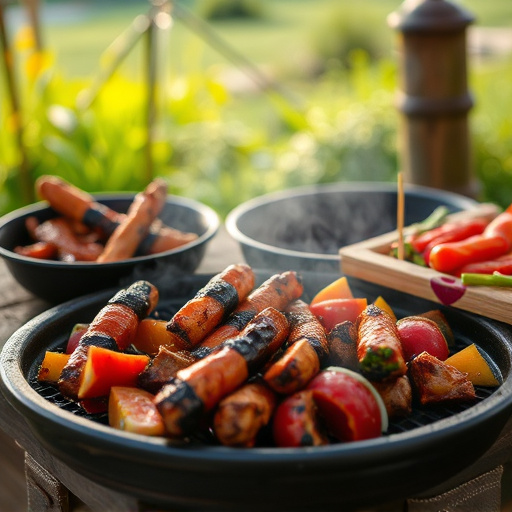
Cooking BBQ pulled pork in a slow cooker is an effortless and delicious way to enjoy this comfort food favorite. Start by placing your boneless pork shoulder (around 3-4 pounds) into the slow cooker. Pour in a mixture of barbecue sauce, apple cider vinegar, garlic, salt, and pepper – adjust seasonings to taste. This zesty sauce not only adds flavor but also helps tenderize the meat during cooking.
Cover the slow cooker and cook on low for 8-10 hours or until the pork shreds easily with a fork. Once cooked, carefully remove the pork and shred it using two forks. Return the shredded pork to the slow cooker, ensuring all sauce is evenly distributed. Keep warm until ready to serve.
Shredding the Pork for a Classic BBQ Experience
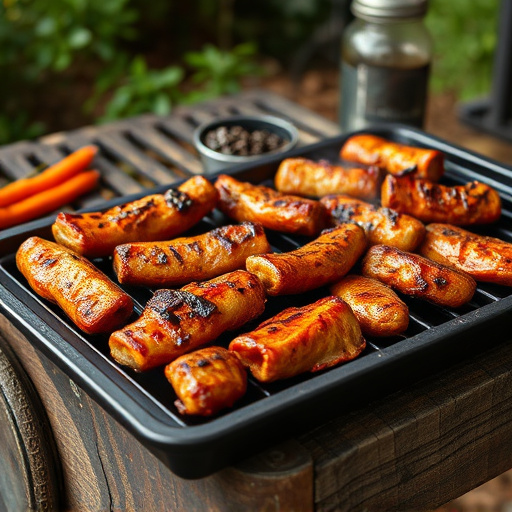
For a classic BBQ experience, shredding pork is a must-have step in any dedicated barbecue enthusiast’s repertoire. When preparing this tender pork with zesty barbecue sauce, using a slow cooker streamlines the process while ensuring a mouthwatering result. The slow cooking method gently breaks down the muscle fibers, making the meat incredibly tender and succulent. This allows for easy shredding by hand or with two forks, creating those beloved BBQ pulled pork shreds that glisten with juicy goodness.
The outcome is a hearty dish that oozes comfort food appeal, perfect for summer gatherings or cozy family dinners. Whether you’re serving it on a bun as a sandwich or over coleslaw as a main course, the shredded pork itself forms the heart of this BBQ pulled pork recipe—a testament to simple pleasures elevated by time-honored cooking methods like slow cooking in a cooker.
Mixing in Flavor with Your Favorite BBQ Sauces
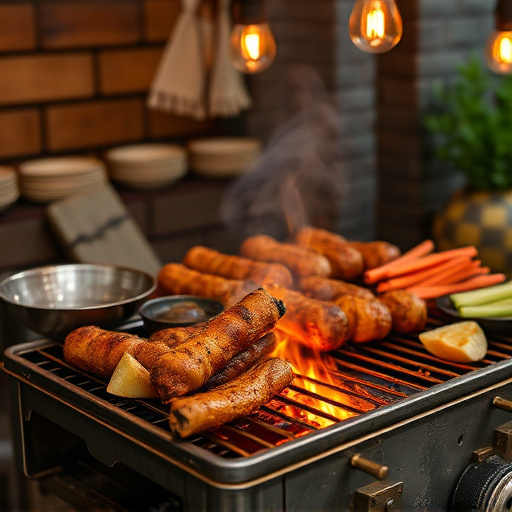
When it comes to enhancing the flavor of your delicious BBQ pulled pork recipe in the slow cooker, experimenting with various barbecue sauces is a game-changer. The key lies in mixing and matching different sauce profiles to create a zesty blend that suits your taste buds. For a classic approach, opt for a store-bought BBQ sauce and adjust the seasoning to match your preferences. You can go for a smoky, sweet, or tangy flavor profile – the choices are endless! Alternatively, create your own sauce by combining ingredients like ketchup, vinegar, brown sugar, garlic, and spices. This allows you to tailor the tanginess, sweetness, and heat level precisely.
Remember, the beauty of this method is the versatility it offers. Whether you’re a fan of a thicker, caramelized sauce or a lighter, more tangy option, you can achieve it by tweaking the ingredients and cooking time. With practice, you’ll master the art of mixing your own BBQ sauces to elevate your slow-cooked pork dish into an extraordinary culinary experience, perfect for any BBQ pulled pork recipe.
Serving Suggestions for Delicious BBQ Pulled Pork

For a heartwarming and satisfying meal, consider serving your tender pork with zesty barbecue sauce alongside some classic sides. A BBQ pulled pork recipe like this is best enjoyed on freshly toasted buns or rolls, paired with coleslaw and baked beans to soak up the tangy, zesty sauce. The slow cooker method ensures that the meat stays moist and tender, making it a convenient option for family dinners or casual get-togethers.
To elevate your BBQ pulled pork experience, serve it with a generous sprinkle of chopped fresh herbs like cilantro or parsley, adding an extra burst of flavor. For a visually appealing presentation, use a shallow bowl to layer the pulled pork, sauce, and sides, creating a colorful and inviting dish that’s sure to impress.
Storage and Reheating Tips for Leftover Pork
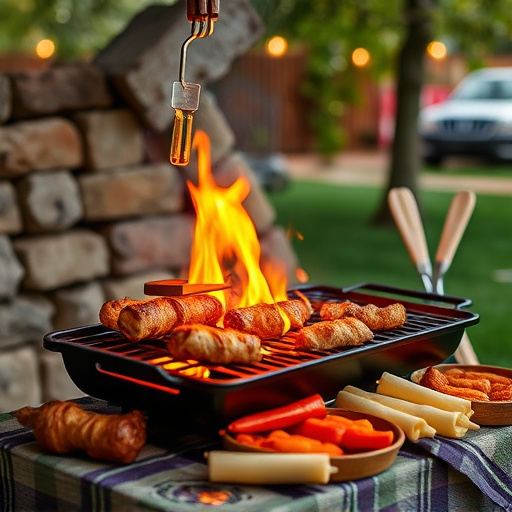
Storing Leftover BBQ Pulled Pork Recipe Slow Cooker:
Place the leftover pork in an airtight container and refrigerate within two hours of cooking to ensure safety. This dish can typically last 3-4 days refrigerated. For longer storage, freeze in smaller portions for up to 3 months.
Reheating is best done in the refrigerator or microwave. To reheat in the fridge, simply take out the desired amount and warm it gently over low heat. Using the microwave, place the pork in a microwave-safe dish, cover, and heat on high intervals until warmed through. Be careful not to overcook when reheating, as this can dry out the tender pork.
